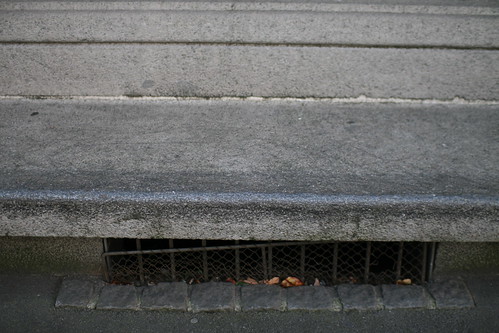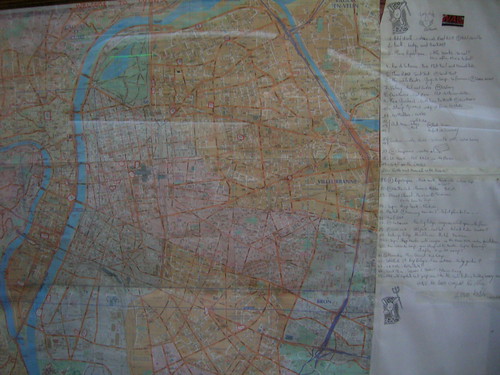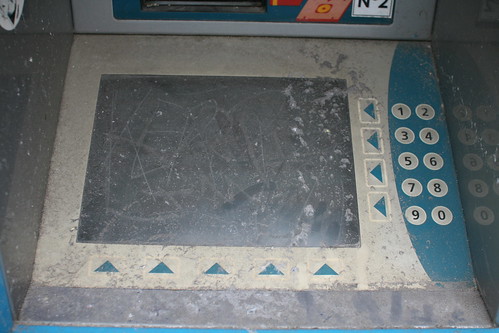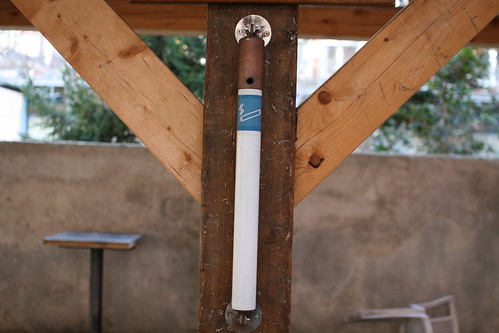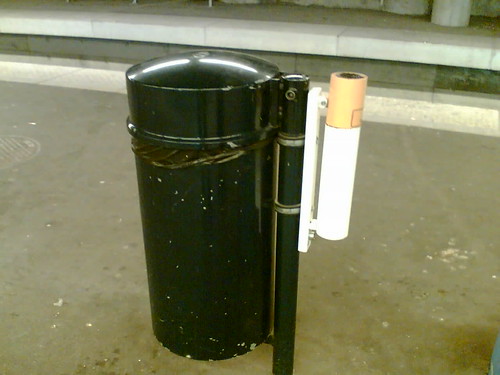In-Car GPS Navigation: Engagement with and Disengagement from the Environment by Leshed, Velden, Rieger, Kot, & Sengers is a paper presented at CHI 2008 that deals with the relationship between GPS car navigation and how people interpret their environment or navigate through it. What's interesting here is that they avoid technological determinism (technology as the external causation of change) and the traditional lament/pessimisn about technologies influence on social change.
Using an ethnographically-informed study with GPS users, the authors show that GPS disengages people from their surrounding environment, but also has the potential to open up novel ways to engage with it". The issues of environmental engagement and disengagement are the following:
- Pre-navigation/Route Choice: "“Finding” the destination is thus modified from a relative spatial activity to correctly keying in the address"
- Route Following: GPS eliminate the attention to objects in the paths, some people less blindly than others.
- Orientation in Unfamiliar Areas: " the GPS disconnects the drivers from the external environment, as they no longer need to find out where they are in order to avoid getting lost or for getting oriented when already lost. This issue is intensified when the GPS automatically and quietly recalculates a new route when its directions are not followed unintentionally (e.g. because of a mistake) or intentionally (e.g. because of road constructions and detours): the practice of re-orienting and consciously re-routing oneself is not necessary anymore. However, some informants reported that they do like to know where they are
Orientation in familiar areas: people do not want to have oral instructions, sometimes disagree with paths, use the gps "just for fun" or use it mark place they know.
- When driving: social Interactions around the GPS: with: "interaction with other passengers in the car has altered given in-car GPS units. With vocal directions from the GPS unit, a passenger who serves as a navigator in the car is no longer in need, and so the driver/navigator roles are modified"
- When driving, the GPS is often treated as an "active agent", socially speaking: naming the device, talking to him.
- When driving, the interaction with the external environment and locals is also altered. For instance, the digital representation is not accurate enough so people have to look outside and see if their POI is here or it can allow to discover new elements (rivers or parks) on the way. And interaction with other people are less needed (to ask a direction).
Based on these results, the author provides some "high-level guidance rather than feature-centered design" ideas:
- "GPS instructions could refer to landmarks in aiding navigation.
- Highlight the ambiguity of GPS data (...) to minimize risks associated with over-trusting an automated device.
- Extend context-aware capabilities: distinctive usage of the GPS in familiar areas
- Support the car as a social place: Instead of secluding the passenger seated near the driver (...) we can engage them in the interaction with the GPS
unit."
Why do I blog this? great paper from lots of criteria (theoretical justification, nice exemplification of techno-social recombination, design implications). Moreover, the design implications are close to what we found in another location-based context: in the CatchBob experiment, while studying how WiFi positioning is employed by players (I'm currently writing a paper with Fabien about it). That paper is also interesting at it contradicts what that "location, location, location" article in the last Economist report state (the fact that we will never be lost or be more immersed in the physical world.
Leshed, G., Velden, T., Rieger, O., Kot, B., & Sengers, P. (2008). In-car GPS navigation: Engagement with and disengagement from the environment. Best Paper Award. To appear in Proceedings of CHI 2008, Florence, Italy.


